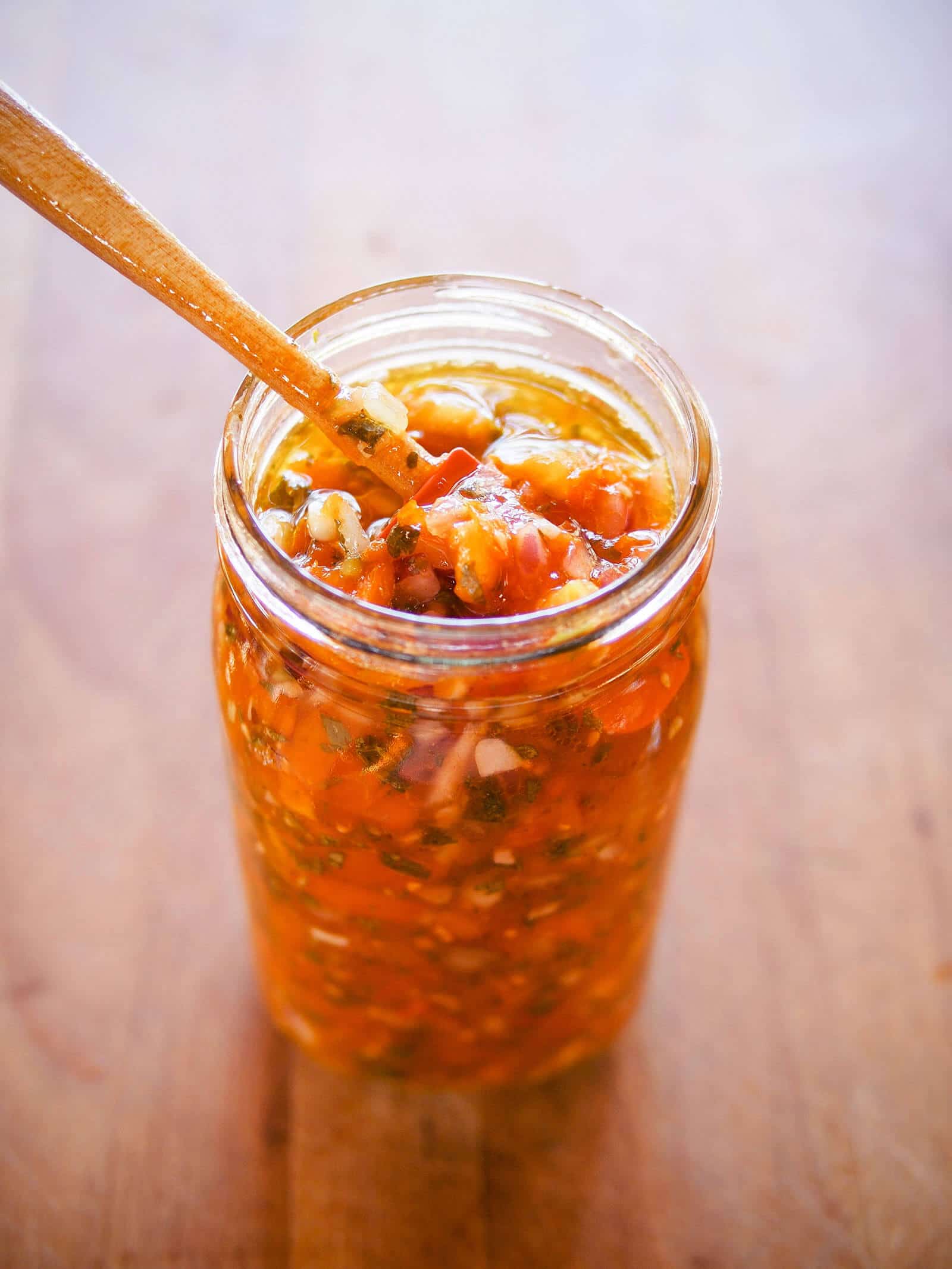This spicy salsa is what I like to call the Harvest Special.
If you planned it right this summer—and started those first seeds last fall, however early that may seem—everything that goes into this salsa can come straight from your garden right about now, from the garlic to the tomatoes.
Related: Find First and Last Frost Dates Accurately with This Custom Planting Calendar
But why fermented salsa? Why not normal salsa like you’ve always made?
I’ve used this same recipe for non-fermented salsa and it’s fine. Great, actually. But fermentation pushes it over the line to fantastic.
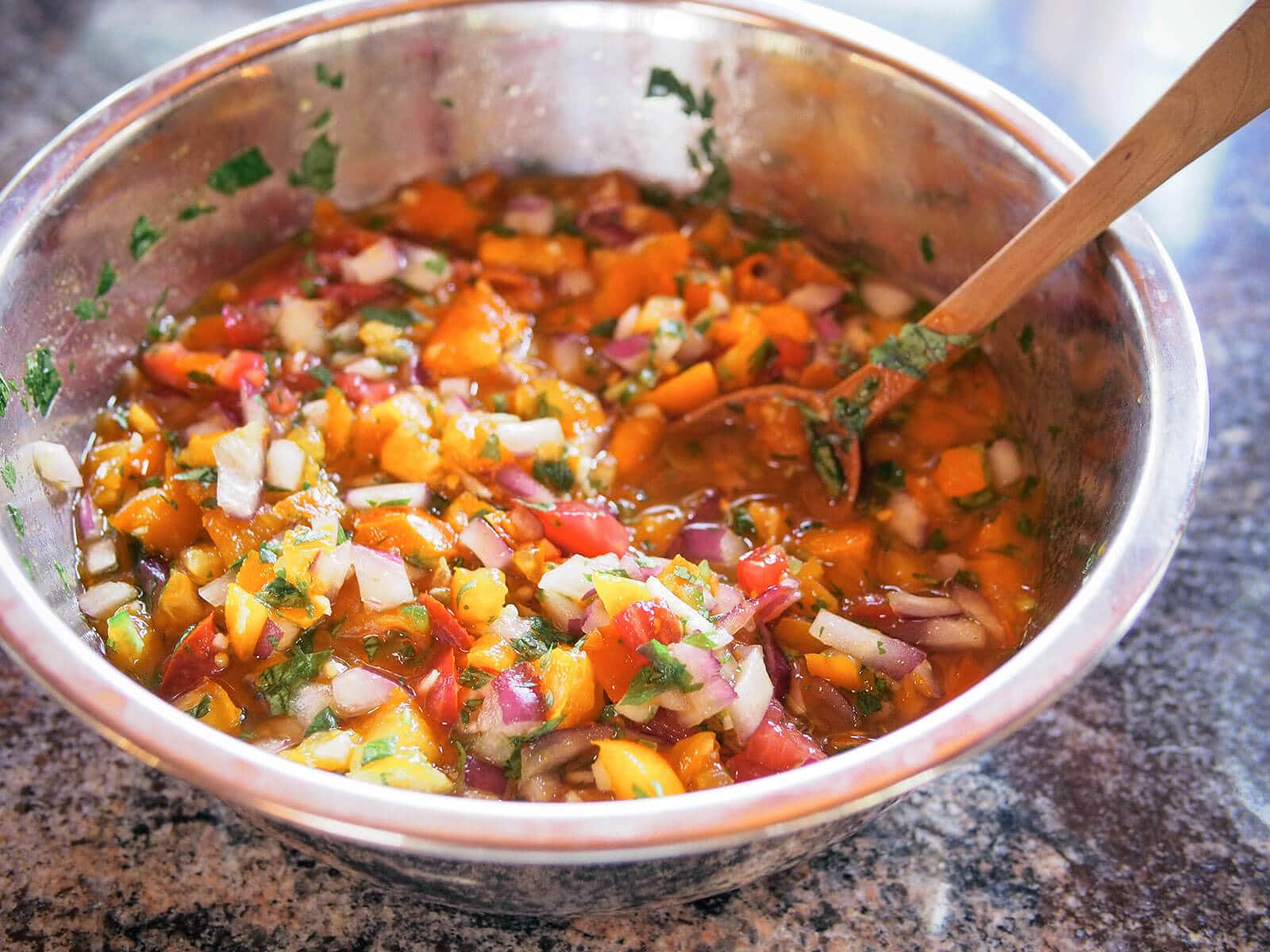
The same bacteria and yeasts that give kraut and kimchi their distinctive flavors also give this salsa a bright and tangy note. It’s lively on the tastebuds without being too sour or too salty.
But taste aside, fermentation actually makes this salsa good for you (and good for your gut) by turning it into a probiotic-laced snack food you can enjoy guiltlessly or “sneak” to picky eaters.
That’s because fermented salsa undergoes the same process of lacto-fermentation as sauerkraut. Simply by letting your salsa sit out for a few days on the counter at room temperature, you encourage all kinds of beneficial bacteria to multiply—the ones you actually want in your food.
Make this next: Fermented Hot Chile Sauce
While many recipes for fermented salsa call for the addition of whey or starter culture, this one lets the existing bacteria (that are already present in all your fresh produce) do the work. It may take a day or two longer to ferment, but the ease of preparation is worth the small wait.
Since you want to help all that good bacteria thrive, I recommend using the best ripe, organic tomatoes if you’re not growing them yourself.
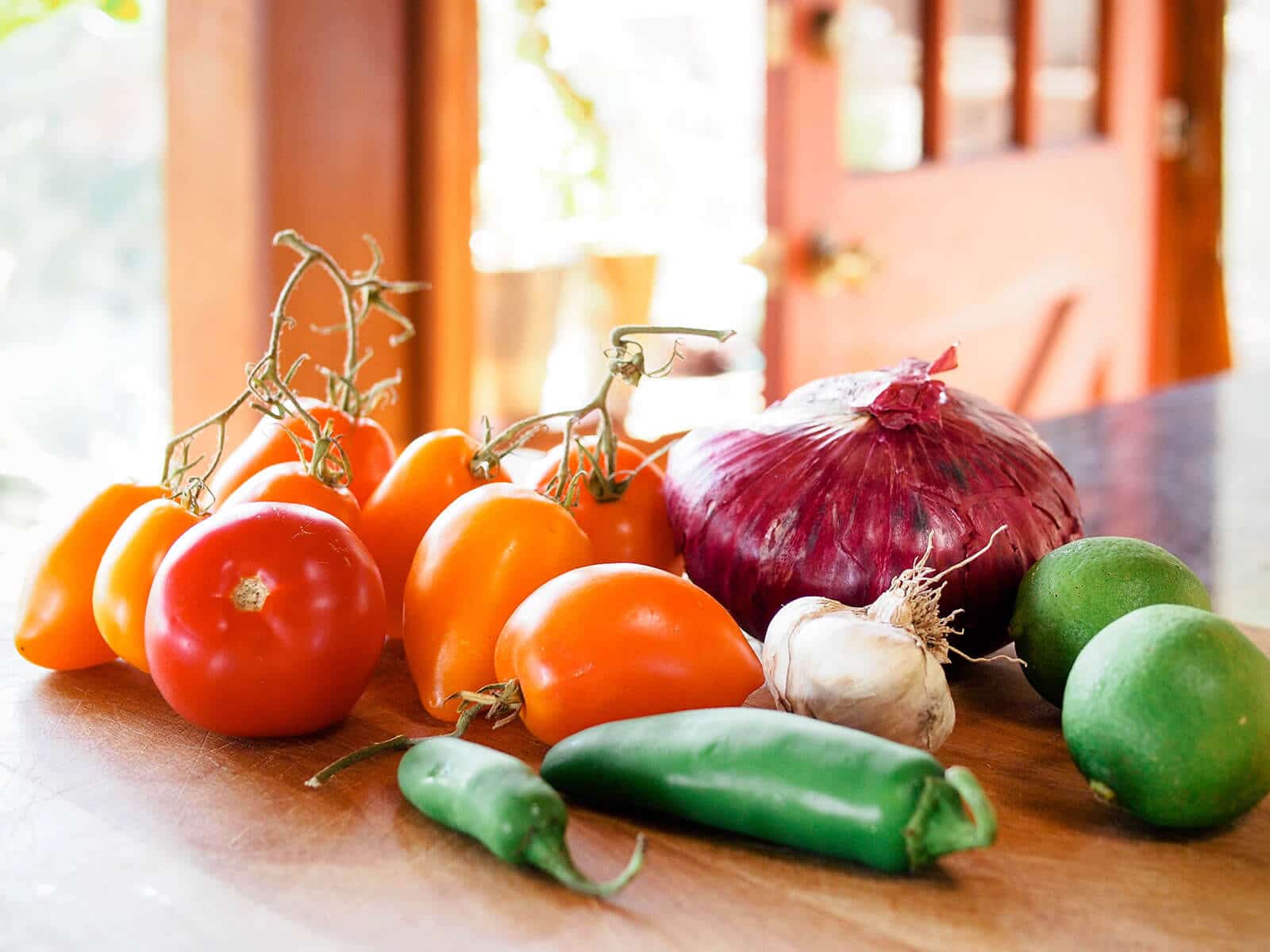
Spicy Fermented Salsa
Makes 1 quart
Ingredients
1 1/2 pounds tomatoes, diced
1/2 red onion, diced
1/2 to 1 jalapeño pepper, minced (depending on heat preference)
1/2 serrano pepper, minced
5 cloves garlic, minced
1/2 cup chopped fresh cilantro
1/2 teaspoon ground cumin
1 teaspoon pickling salt or sea salt
Juice from 1 lime
Extra-virgin olive oil
Instructions
In a medium bowl, mix the first nine ingredients together (including the seeds and juices from your tomatoes).
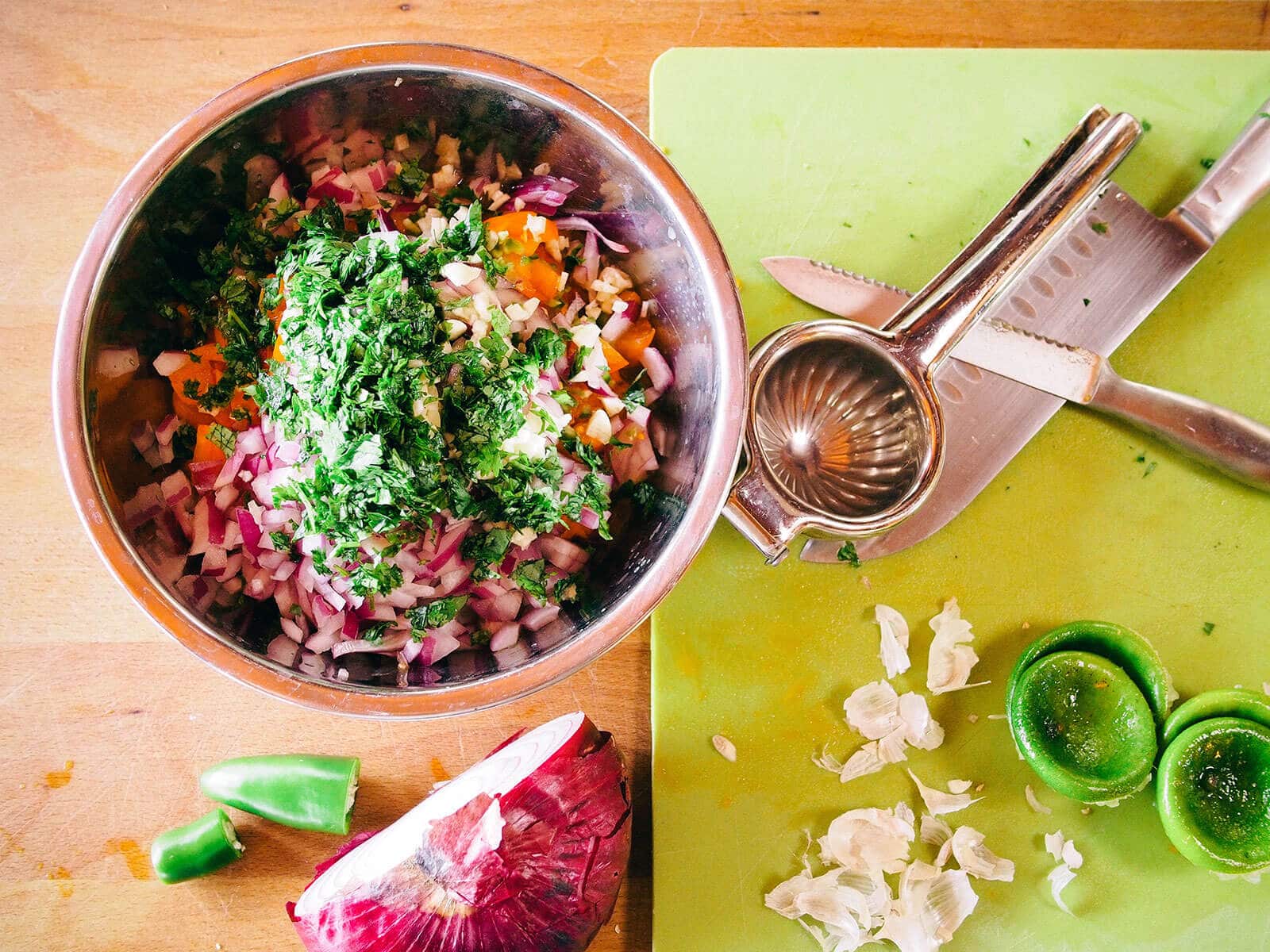
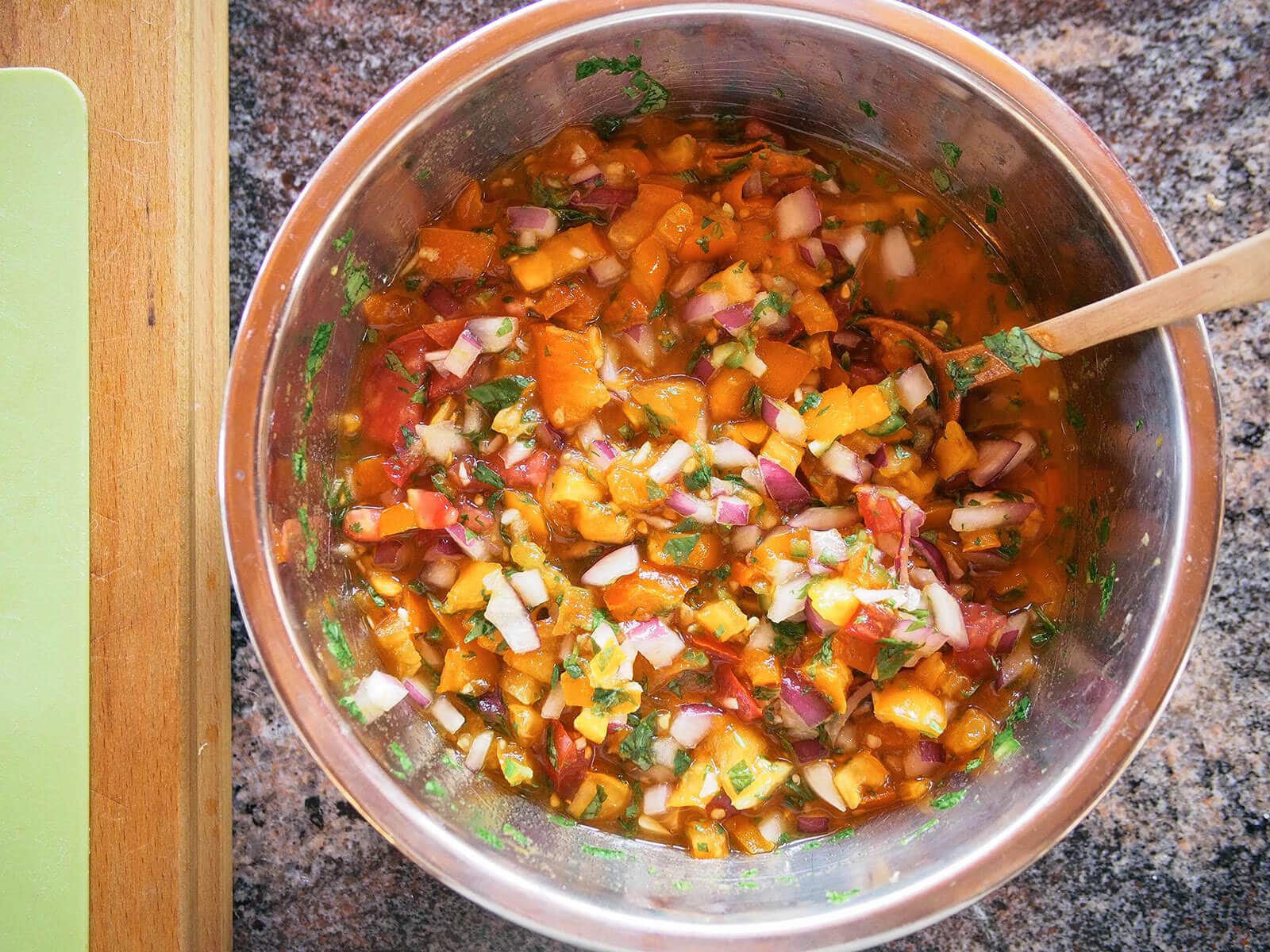
Pour the salsa into a quart-sized jar and run a chopstick around the jar to release any trapped air bubbles.
Add a 1/2-inch layer of olive oil on top. The olive oil serves two purposes here: one, it prevents the vegetables from rising above the water and growing mold on the surface, and two, it adds richness to the salsa once you mix it in.
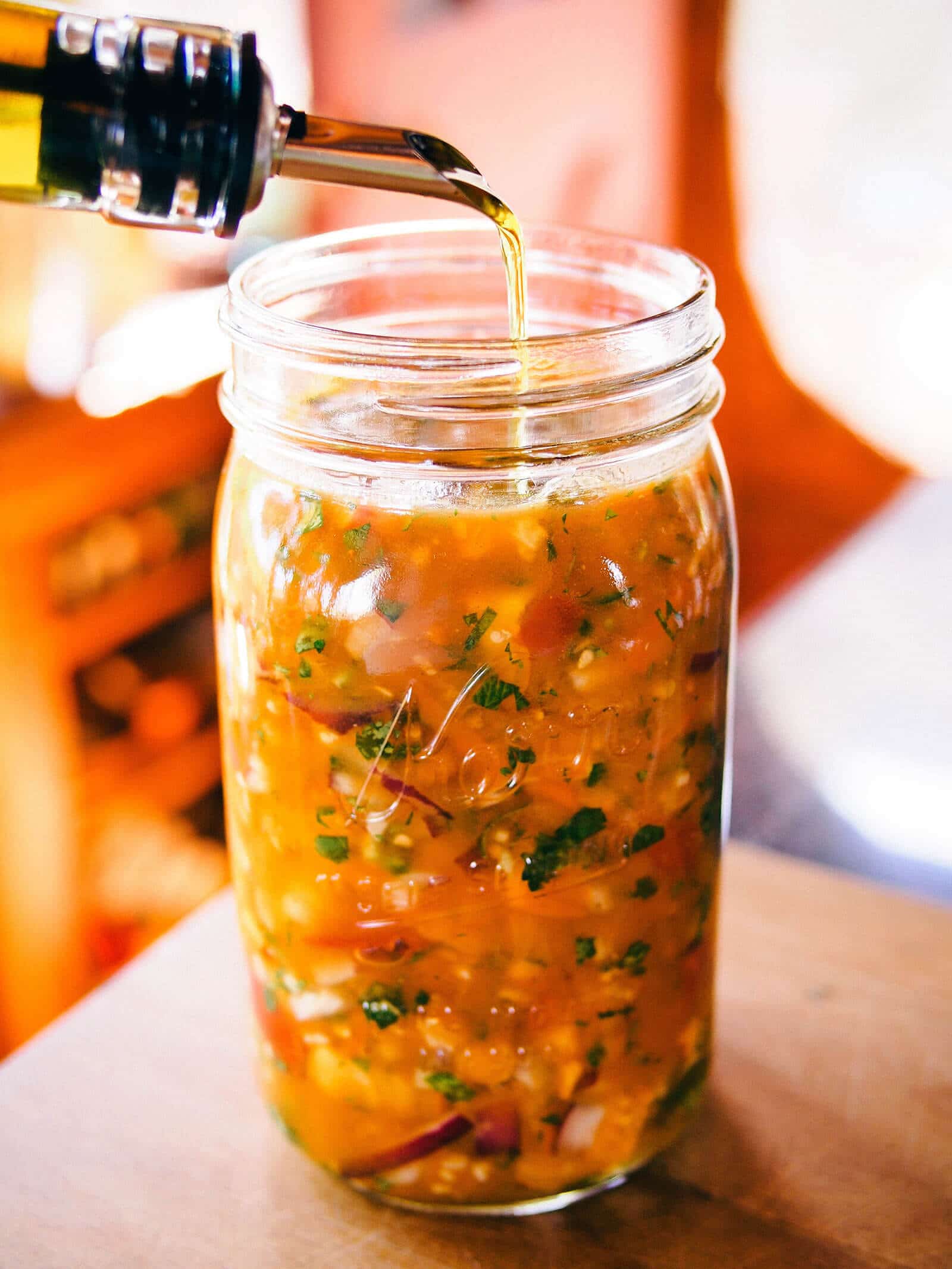
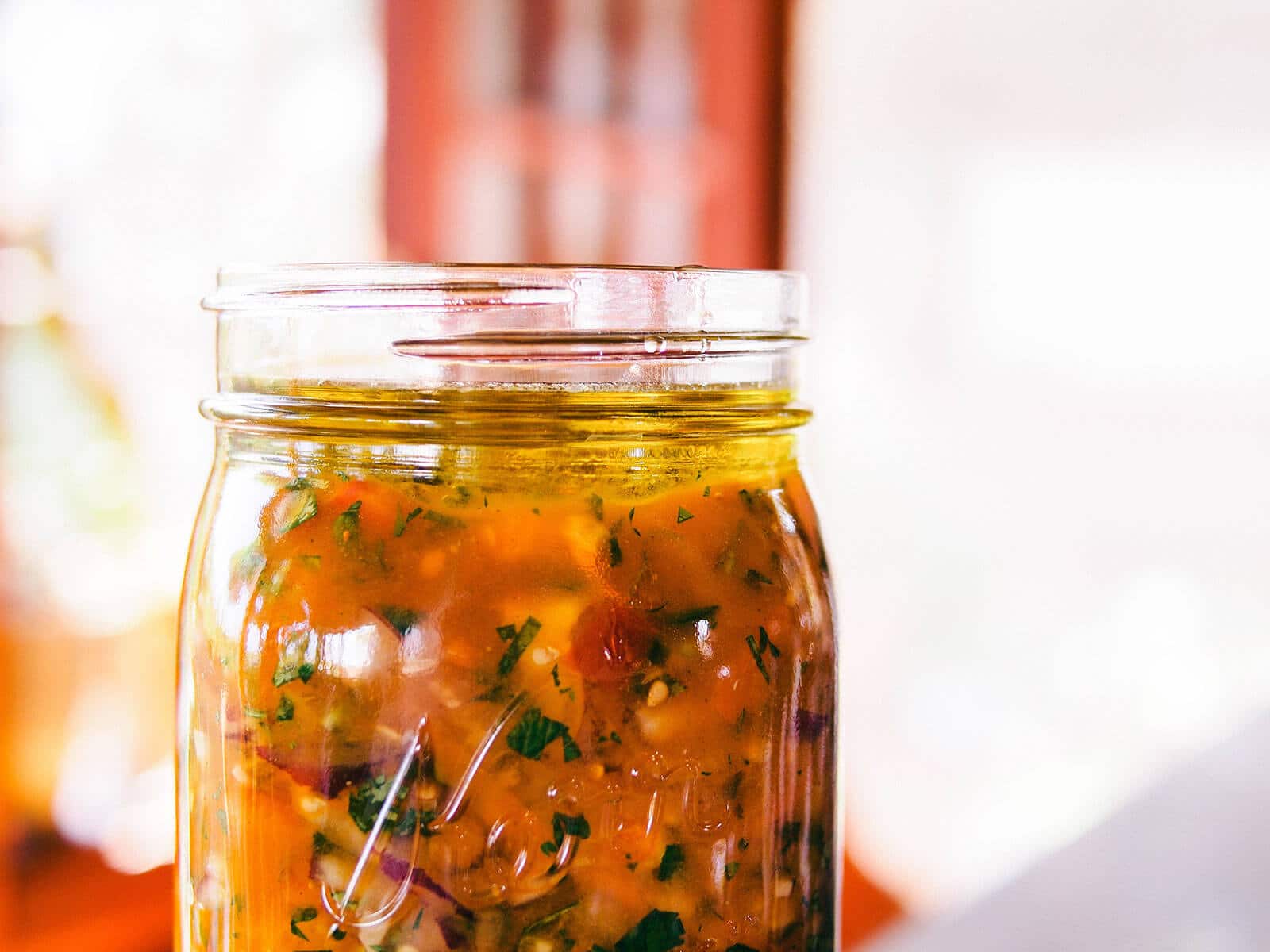
Loosely seal the jar with a lid and leave it out of direct sunlight for a few days. (I spin the lid only a couple times—enough to keep out dust and pantry pests, but loose enough to let fermentation gases escape.)
The warmer your room temperature is, the faster your salsa will ferment. Within a day or two, you’ll start to see fizzies in the juices as the lactic acid bacteria grow and flourish.
In my very warm kitchen this summer, it took four days for all the ingredients to meld and develop a bold, tangy flavor. You could leave it for up to a week for the tang to intensify; the longer you let it ferment, the longer the salsa will keep. (Not that it would ever last that long in this household!)
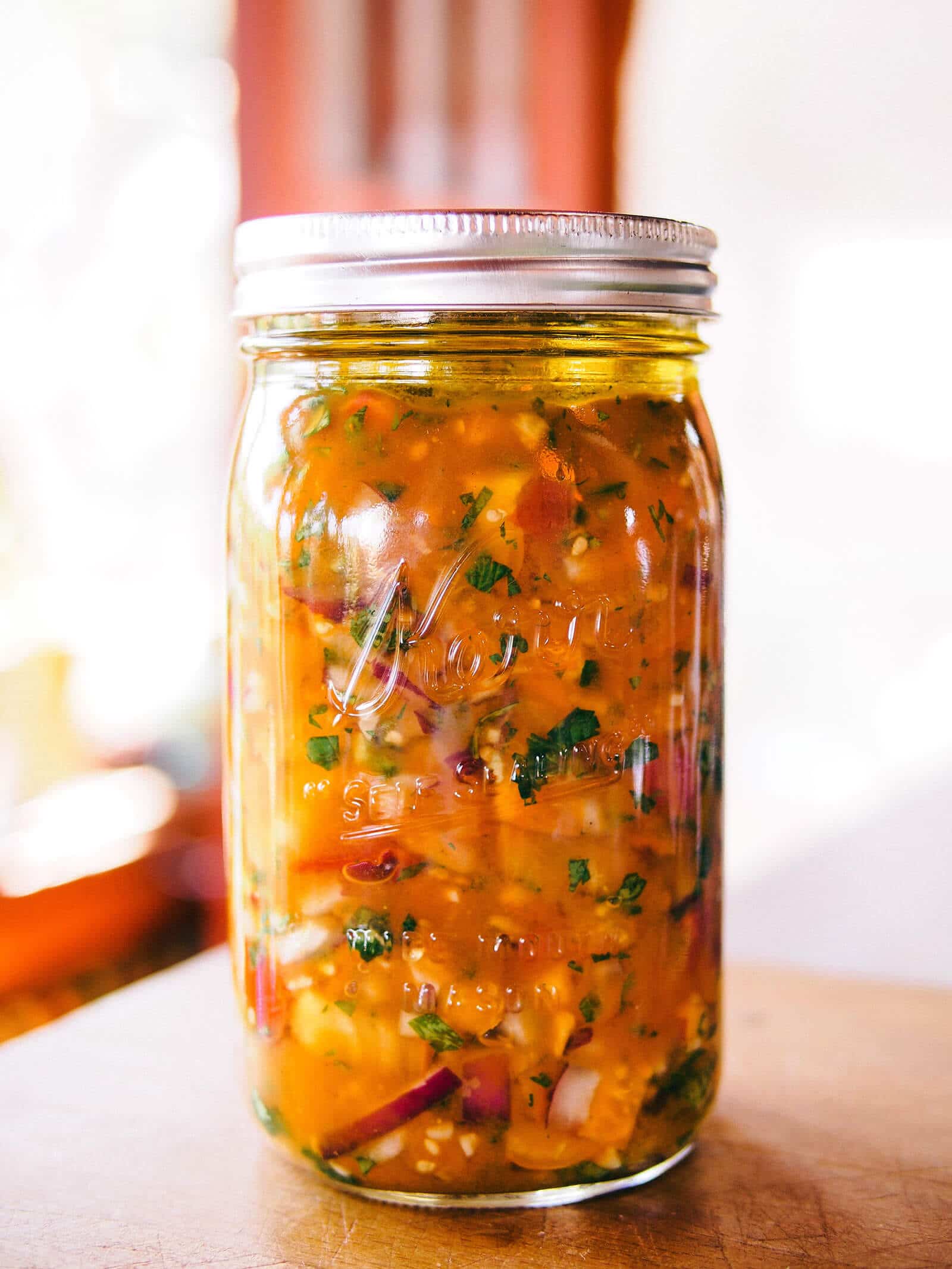
Once the salsa’s to your liking, refrigerate the jar to slow down the fermentation process (and keep the salsa from getting too sour).
The olive oil will congeal in the cold temperature, but is perfectly safe to eat. Just mix it in with a spoon before you use the salsa, or let the jar rest at room temp before serving.
Spicy Fermented Salsa
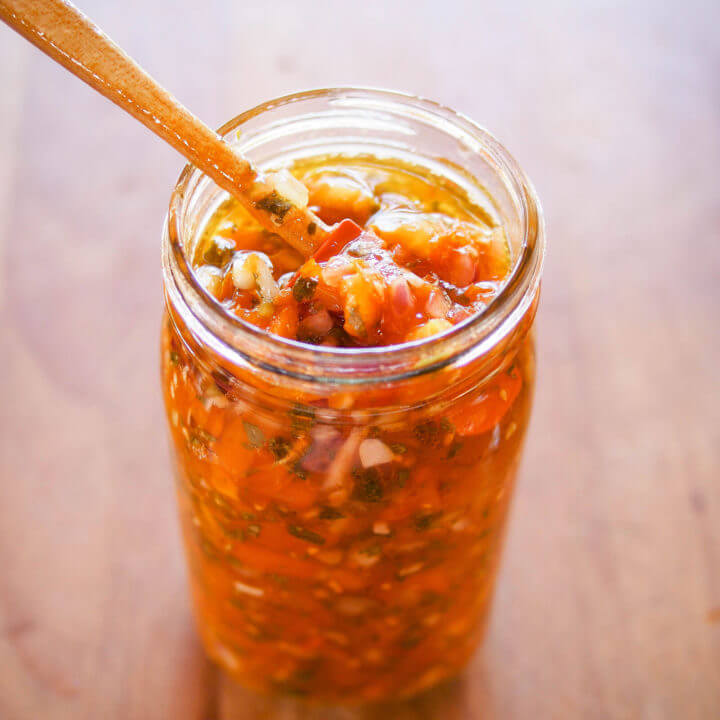
How do you take a salsa that's already great and push it over the edge to fantastic? With fermentation! Fermented salsa brings all the health benefits of good bacteria to the ripe and juicy summer tomatoes you already love. And, it couldn't be easier to make!
Ingredients
- 1 1/2 pounds tomatoes, diced
- 1/2 red onion, diced
- 1/2 to 1 jalapeño pepper, minced (depending on heat preference)
- 1/2 serrano pepper, minced
- 5 cloves garlic, minced
- 1/2 cup chopped fresh cilantro
- 1/2 teaspoon ground cumin
- 1 teaspoon pickling salt or sea salt
- Juice from 1 lime
- Extra-virgin olive oil
Instructions
- In a medium bowl, mix the first nine ingredients together (including the seeds and juices from your tomatoes).
- Pour the salsa into a quart-sized jar and run a chopstick around the jar to release any trapped air bubbles.
- Add a 1/2-inch layer of olive oil on top. The olive oil serves two purposes here: one, it prevents the vegetables from rising above the water and growing mold on the surface, and two, it adds richness to the salsa once you mix it in.
- Loosely seal the jar with a lid and leave it out of direct sunlight for a few days. (I spin the lid only a couple times—enough to keep out dust and pantry pests, but loose enough to let fermentation gases escape.)
- The warmer your room temperature is, the faster your salsa will ferment. Within a day or two, you'll start to see fizzies in the juices as the lactic acid bacteria grow and flourish. It may take up to four days for all the ingredients to meld and develop a bold, tangy flavor. You could leave it for up to a week for the tang to intensify; the longer you let it ferment, the longer the salsa will keep.
- Once the salsa's to your liking, refrigerate the jar to slow down the fermentation process (and keep the salsa from getting too sour).
Notes
Once refrigerated, the olive oil will congeal in the cold temperature, but is perfectly safe to eat. Just mix it in with a spoon before you use the salsa, or let the jar rest at room temp before serving.
Nutrition Information:
Yield:
4Serving Size:
1 cupAmount Per Serving: Calories: 76Total Fat: 4gSaturated Fat: 1gTrans Fat: 0gUnsaturated Fat: 3gCholesterol: 0mgSodium: 302mgCarbohydrates: 10gFiber: 3gSugar: 5gProtein: 2g
Nutrition information isn't always accurate.
This post updated from an article that originally appeared on September 19, 2013.
View the Web Story on how to make fermented salsa.


